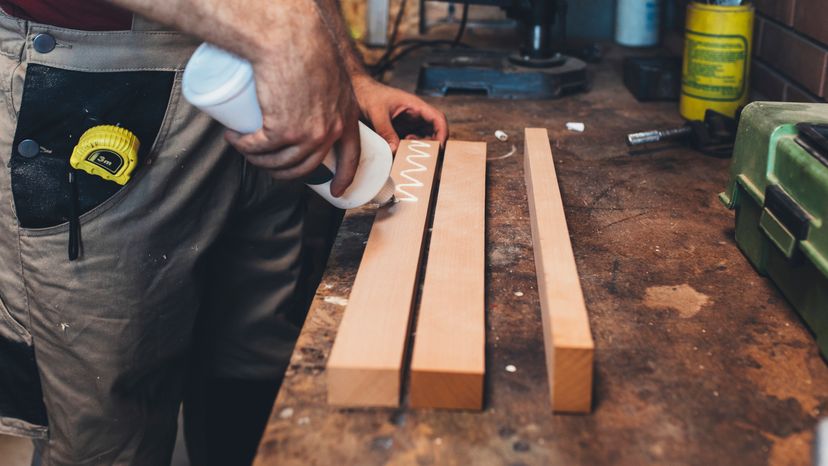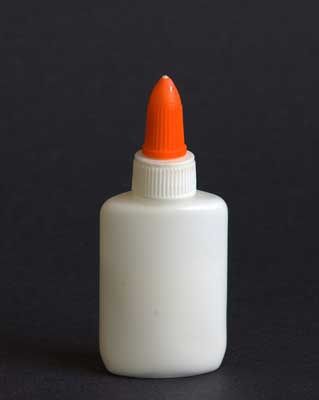
You've probably been using white glue since you were a child. Elmer's glue is a popular adhesive for grade-school arts and crafts projects. Most glues like Elmer's are considered polyvinyl acetates, or PVAs. They don't bond as well as some other kinds of glues, which is an advantage when mistakes and spills are likely. Another benefit of these water-soluble glues is that you can dilute them with a bit of water to create a thin and even coating. Diluted white glue is particularly popular among hobbyists who create scenery for model railroad displays.
Another reason white glue is so popular for these projects is because of the way it works. In general, glue functions in one of two ways: It can either flow into porous materials and dry, which "knits" the materials together, or it can actually create a chemical reaction to bond molecules together. White glue falls into the first category, which explains why it doesn't work well on smooth materials but is excellent for sticking wood, paper and fabrics together [source: Carter].
Advertisement
If you want to use white glue for a modeling project but you're afraid of ending up with an uneven surface and excess glue protruding between surfaces, spraying on the glue is a good way to ensure even application. To spray white glue, you need to thin it down a bit with water. Some people also dilute it for non-spray applications to ensure an even layer. There is no one agreed-upon dilution ratio, as different hobbyists prefer different proportions. Generally, the idea is to get a liquid substance that will spray easily. Some people recommend a ratio of one part glue to four parts water, and others recommend one part glue to three parts water.
